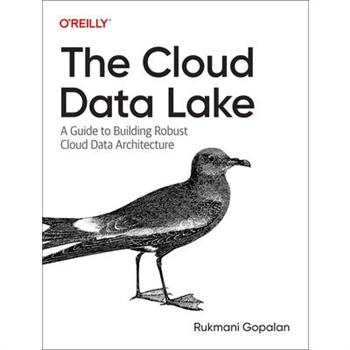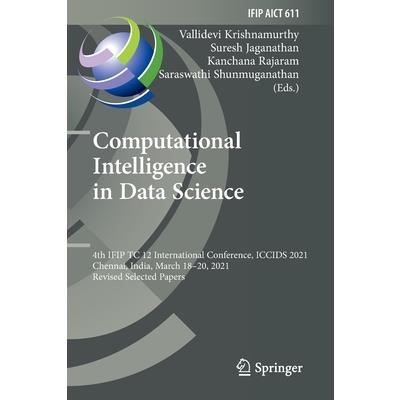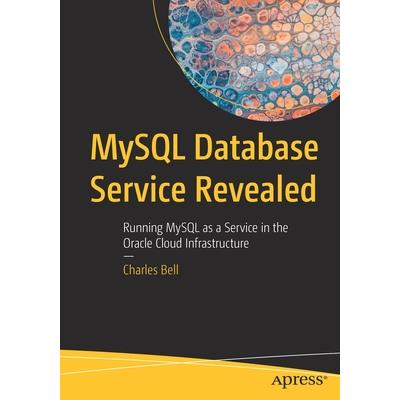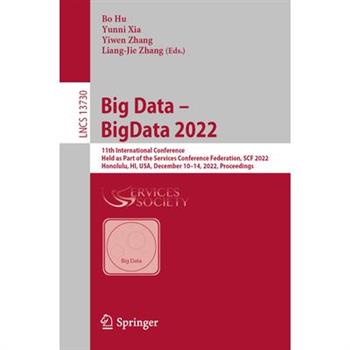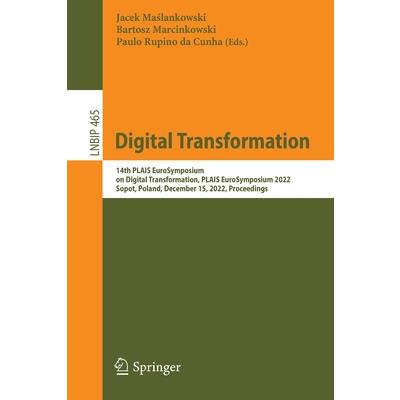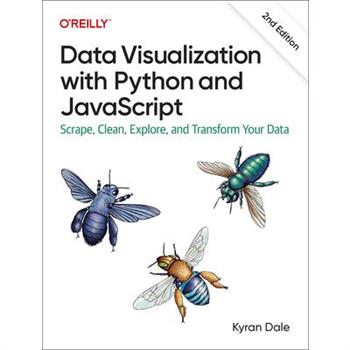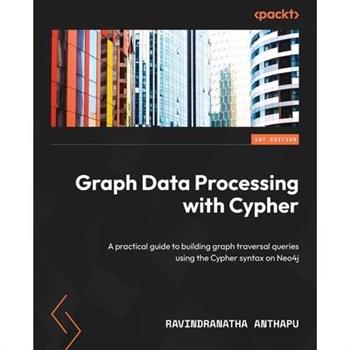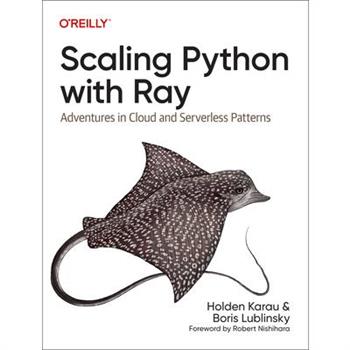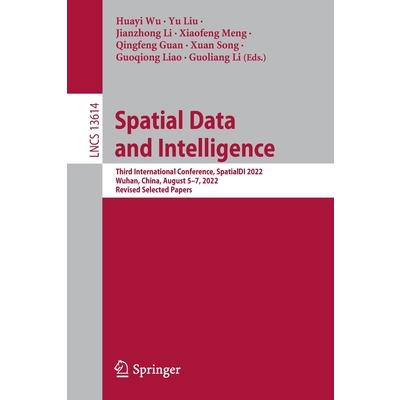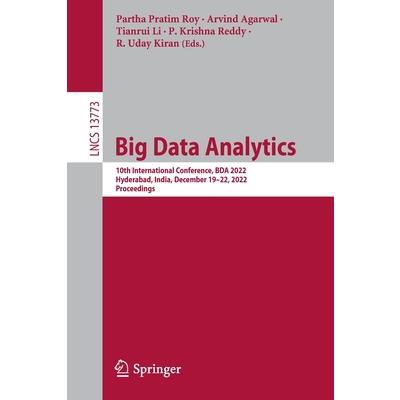Military Applications of Data Analytics
Military organizations around the world are normally huge producers and consumers of data. Accordingly, they stand to gain from the many benefits associated with data analytics. However, for leaders in defense organizations--either government or industry--accessible use cases are not always available. This book presents a diverse collection of cases that explore the realm of possibilities in military data analytics. These use cases explore such topics as: Context for maritime situation awareness Data analytics for electric power and energy applications Environmental data analytics in military operations Data analytics and training effectiveness evaluation Harnessing single board computers for military data analytics Analytics for military training in virtual reality environments A chapter on using single board computers explores their application in a variety of domains, including wireless sensor networks, unmanned vehicles, and cluster computing. The investigation into a process for extracting and codifying expert knowledge provides a practical and useful model for soldiers that can support diagnostics, decision making, analysis of alternatives, and myriad other analytical processes. Data analytics is seen as having a role in military learning, and a chapter in the book describes the ongoing work with the United States Army Research Laboratory to apply data analytics techniques to the design of courses, evaluation of individual and group performances, and the ability to tailor the learning experience to achieve optimal learning outcomes in a minimum amount of time. Another chapter discusses how virtual reality and analytics are transforming training of military personnel. Virtual reality and analytics are also transforming monitoring, decision making, readiness, and operations.Military Applications of Data Analytics brings together a collection of technical and application-oriented use cases. It enables decision makers and technologists to make connections between data analytics and such fields as virtual reality and cognitive science that are driving military organizations around the world forward.
A Course in Natural Language Processing
Natural Language Processing is the branch of Artificial Intelligence involving language, be it in spoken or written modality. Teaching Natural Language Processing (NLP) is difficult because of its inherent connections with other disciplines, such as Linguistics, Cognitive Science, Knowledge Representation, Machine Learning, Data Science, and its latest avatar: Deep Learning. Most introductory NLP books favor one of these disciplines at the expense of others. Based on a course on Natural Language Processing taught by the author at IMT Atlantique for over a decade, this textbook considers three points of view corresponding to three different disciplines, while granting equal importance to each of them. As such, the book provides a thorough introduction to the topic following three main threads: the fundamental notions of Linguistics, symbolic Artificial Intelligence methods (based on knowledge representation languages), and statistical methods (involving both legacy machine learning and deep learning tools). Complementary to this introductory text is teaching material, such as exercises and labs with hints and expected results. Complete solutions with Python code are provided for educators on the SpringerLink webpage of the book. This material can serve for classes given to undergraduate and graduate students, or for researchers, instructors, and professionals in computer science or linguistics who wish to acquire or improve their knowledge in the field. The book is suitable and warmly recommended for self-study.
Working with Oracle Goldengate 12c
This book teaches the basics of Oracle GoldenGate, which is simplifies the process of Oracle Database Replication. Its popularity is due to its ability to make the highly complex architecture of database replication into a more simpler task. This book teaches the reader how to use Oracle GoldenGate from installation to troubleshooting.
Data Mining Models of Surface Inspection and Identification of Accurate Defects in Steel Sheet
Data mining models are used to analyze large amounts of data in order to identify patterns and relationships that can be used for decision making. In the context of surface inspection and identification of accurate defects in steel sheets, data mining models can be used to analyze images of the steel sheets and identify defects such as cracks, scratches, and other surface imperfections.One type of data mining model that can be used for this purpose is called a "convolutional neural network" (CNN). This type of model is able to analyze images and identify patterns within them, making it well-suited for identifying defects in steel sheet images.Another type of data mining model that can be used is called "Support Vector Machine" (SVM). It is an algorithm that can be used to classify the steel sheets into defective or non-defective based on the features extracted from the images of the steel sheets.Additionally, other data mining models like Random Forest, Decision Trees, K-Nearest Neighbors, and Naive Bayes can also be used to classify and identify the defects in steel sheets.Overall, data mining models can be an effective way to analyze images of steel sheets and identify defects. These models can be trained using large amounts of data and can be used to classify the steel sheets into defective or non-defective with high accuracy.Steel is one of the high demanded industrial material. It has a crucial role in increasing the per capita income of the country. It also acts as the primary material in many industries like construction, infrastructure, making pieces of machinery. Steel is the material found in common demand worldwide. Therefore, quality assurance of the material is considered as the most essential attribute. Due to increased competition in product supply makes, the manufacturer task to find a suitable market for his/her product challenging. However, an ever-ending requirement for the quality of industrial products in the market. Hence, it is becoming unavoidable to have an eye on the perfection of the product to meet up the international standards. This helps the steel industries to compete globally .Efficiency in steel production must be maximised, and inspection in the quality has to be enhanced. In the present scenario, the quality check is done visually by employing human resources. This process is time-consuming, and the efficiency of the work is not entirely reliable to meet the global standards. Hence it has laid a path to automate the defect detection and classify the defected products to reduce the defects in the finished products.Surface defects detection technique is widely applied in industrial scenarios. The surface quality inspection of steel plate has passed through three stages of development, including manual visual inspection, traditional non-destructive testing, and machine vision detection. Artificial visual inspection commonly uses the stroboscopic method.
Symbols
For millennia humans have used visible marks to communicate information. Modern examples of conventional graphical symbols include written language, and non-linguistic symbol systems such as mathematical symbology or traffic signs. The latter kinds of symbols convey information without reference to language. This book presents the first systematic study of graphical symbol systems, including a history of graphical symbols from the Paleolithic onwards, a taxonomy of non-linguistic systems - systems that are not tied to spoken language - and a survey of more than 25 such systems. One important feature of many non-linguistic systems is that, as in written language, symbols may be combined into complex "messages" if the information the system represents is itself complex. To illustrate, the author presents an in-depth comparison of two systems that had very similar functions, but very different structure: European heraldry and Japanese kamon. Writing first appeared in Mesopotamia about 5,000 years ago and is believed to have evolved from a previous non-linguistic accounting system. The exact mechanism is unknown, but crucial was the discovery that symbols can represent the sounds of words, not just the meanings. The book presents a novel neurologically-inspired hypothesis that writing evolved in an institutional context in which symbols were "dictated", thus driving an association between symbol and sound, and provides a computational simulation to support this hypothesis. The author further discusses some common fallacies about writing and non-linguistic systems, and how these relate to widely cited claims about statistical "evidence" for one or another system being writing. The book ends with some thoughts about the future of graphical symbol systems. The intended audience includes students, researchers, lecturers, professionals and scientists from fields like Natural Language Processing, Machine Learning, Archaeology and Semiotics, as well as general readers interested in language and/or writing systems and symbol systems.
Ubiquitous Security
This book constitutes the refereed proceedings of the Second International Conference, UbiSec 2022, held in Zhangjiajie, China, during December 28-31, 2022.The 34 full papers and 4 short papers included in this book were carefully reviewed and selected from 98 submissions. They were organized in topical sections as follows: cyberspace security, cyberspace privacy, cyberspace anonymity and short papers.
Root Cause Analysis, Second Edition
This bestseller can help anyone whose role is to try to find specific causes for failures.It provides detailed steps for solving problems, focusing more heavily on the analytical process involved in finding the actual causes of problems. It does this using figures, diagrams, and tools useful for helping to make our thinking visible. This increases our ability to see what is truly significant and to better identify errors in our thinking. In the sections on finding root causes, this second edition now includes more examples on the use of multi-vari charts; how thought experiments can help guide data interpretation; how to enhance the value of the data collection process; cautions for analyzing data; and what to do if one can't find the causes. In its guidance on solution identification, biomimicry and TRIZ have been added as potential solution identification techniques. In addition, the appendices have been revised to include: an expanded breakdown of the 7 M's, which includes more than 50 specific possible causes; forms for tracking causes and solutions, which can help maintain alignment of actions; techniques for how to enhance the interview process; and example responses to problem situations that the reader can analyze for appropriateness.
Snowflake Snowpro(tm) Advanced Architect Certification Companion
Master the intricacies of Snowflake and prepare for the SnowPro Advanced Architect Certification exam with this comprehensive study companion. This book provides robust and effective study tools to help you prepare for the exam and is also designed for those who are interested in learning the advanced features of Snowflake. The practical examples and in-depth background on theory in this book help you unleash the power of Snowflake in building a high-performance system. The best practices demonstrated in the book help you use Snowflake more powerfully and effectively as a data warehousing and analytics platform. Reading this book and reviewing the concepts will help you gain the knowledge you need to take the exam. The book guides you through a study of the different domains covered on the exam: Accounts and Security, Snowflake Architecture, Data Engineering, and Performance Optimization. You'll also be well positioned to apply your newly acquired practical skills to real-world Snowflake solutions. You will have a deep understanding of Snowflake to help you take full advantage of Snowflake's architecture to deliver value analytics insight to your business.What You Will LearnGain the knowledge you need to prepare for the examReview in-depth theory on Snowflake to help you build high-performance systemsBroaden your skills as a data warehouse designer to cover the Snowflake ecosystemOptimize performance and costs associated with your use of the Snowflake data platformShare data securely both inside your organization and with external partnersApply your practical skills to real-world Snowflake solutionsWho This Book Is ForAnyone who is planning to take the SnowPro Advanced Architect Certification exam, those who want to move beyond traditional database technologies and build their skills to design and architect solutions using Snowflake services, and veteran database professionals seeking an on-the-job reference to understand one of the newest and fastest-growing technologies in data
Geospatial Data Analytics and Urban Applications
This book highlights advanced applications of geospatial data analytics to address real-world issues in urban society. With a connected world, we are generating spatial at unprecedented rates which can be harnessed for insightful analytics which define the way we analyze past events and define the future directions. This book is an anthology of applications of spatial data and analytics performed on them for gaining insights which can be used for problem solving in an urban setting. Each chapter is contributed by spatially aware data scientists in the making who present spatial perspectives drawn on spatial big data. The book shall benefit mature researchers and student alike to discourse a variety of urban applications which display the use of machine learning algorithms on spatial big data for real-world problem solving.
Electronic Governance with Emerging Technologies
This book constitutes selected and revised papers presented at the First International Conference on Electronic Governance with Emerging Technologies, EGETC 2022, held in Tampico, Mexico, in September 2022. The 15 full papers and 2 short papers presented were thoroughly reviewed and selected from the 54 submissions. This volume focuses on the recent developmentsin the domain of eGovernment and governance of digital organizations also aims to shed light on the emerging research trends and their applications.
Artificial Intelligence
This three-volume set LNCS 13604-13606 constitutes revised selected papers presented at the Second CAAI International Conference on Artificial Intelligence, held in Beijing, China, in August 2022. CICAI is a summit forum in the field of artificial intelligence and the 2022 forum was hosted by Chinese Association for Artificial Intelligence (CAAI). The 164 papers were thoroughly reviewed and selected from 521 submissions. CICAI aims to establish a global platform for international academic exchange, promote advanced research in AI and its affiliated disciplines such as machine learning, computer vision, natural language, processing, and data mining, amongst others.
Mathematical Foundations of Software Engineering
This textbook presents an introduction to the mathematical foundations of software engineering. It presents the rich applications of mathematics in areas such as error-correcting codes, cryptography, the safety and security critical fields, the banking and insurance fields, as well as traditional engineering applications. Topics and features: Addresses core mathematics for critical thinking and problem solving Discusses propositional and predicate logic and various proof techniques to demonstrate the correctness of a logical argument. Examines number theory and its applications to cryptography Considers the underlying mathematics of error-correcting codes Discusses graph theory and its applications to modelling networks Reviews tools to support software engineering mathematics, including automated and interactive theorem provers and model checkingDiscusses financial software engineering, including simple and compound interest, probability and statistics, and operations research Discusses software reliability and dependability and explains formal methods used to derive a program from its specification Discusses calculus, matrices, vectors, complex numbers, and quaternions, as well as applications to graphics and robotics Includes key learning topics, summaries, and review questions in each chapter, together with a useful glossary This practical and easy-to-follow textbook/reference is ideal for computer science students seeking to learn how mathematics can assist them in building high-quality and reliable software on time and on budget. The text also serves as an excellent self-study primer for software engineers, quality professionals, and software managers.
Data Analytics Using Splunk 9.x
Make the most of Splunk 9.x to build insightful reports and dashboards with a detailed walk-through of its extensive features and capabilitiesKey Features: - Be well-versed with the Splunk 9. x architecture, installation, onboarding, and indexing data features- Create advanced visualizations using the Splunk search processing language- Explore advanced Splunk administration techniques, including clustering, data modeling, and container managementBook Description: Splunk 9 improves on the existing Splunk tool to include important features such as federated search, observability, performance improvements, and dashboarding. This book helps you to make the best use of the impressive and new features to prepare a Splunk installation that can be employed in the data analysis process.Starting with an introduction to the different Splunk components, such as indexers, search heads, and forwarders, this Splunk book takes you through the step-by-step installation and configuration instructions for basic Splunk components using Amazon Web Services (AWS) instances. You'll import the BOTS v1 dataset into a search head and begin exploring data using the Splunk Search Processing Language (SPL), covering various types of Splunk commands, lookups, and macros. After that, you'll create tables, charts, and dashboards using Splunk's new Dashboard Studio, and then advance to work with clustering, container management, data models, federated search, bucket merging, and more.By the end of the book, you'll not only have learned everything about the latest features of Splunk 9 but also have a solid understanding of the performance tuning techniques in the latest version.What You Will Learn: - Install and configure the Splunk 9 environment- Create advanced dashboards using the flexible layout options in Dashboard Studio- Understand the Splunk licensing models- Create tables and make use of the various types of charts available in Splunk 9.x- Explore the new configuration management features- Implement the performance improvements introduced in Splunk 9.x- Integrate Splunk with Kubernetes for optimizing CI/CD managementWho this book is for: The book is for data analysts, Splunk users, and administrators who want to become well-versed in the data analytics services offered by Splunk 9. You need to have a basic understanding of Splunk fundamentals to get the most out of this book.Table of Contents- Introduction to Splunk and its Core Components- Setting Up the Splunk Environment- Onboarding and Normalizing Data- Introduction to SPL- Reporting Commands, Lookups, and Macros- Creating Tables and Charts Using SPL- Creating Dynamic Dashboards- Licensing, Indexing, and Buckets- Clustering and Advanced Administration- Data Models, Acceleration, and Other Ways to Improve Performance- Multisite Splunk Deployments and Federated Search- Container Management
The Cloud Data Lake
More organizations than ever understand the importance of data lake architectures for deriving value from their data. Building a robust, scalable, and performant data lake remains a complex proposition, however, with a buffet of tools and options that need to work together to provide a seamless end-to-end pipeline from data to insights. This book provides a concise yet comprehensive overview on the setup, management, and governance of a cloud data lake. Author Rukmani Gopalan, a product management leader and data enthusiast, guides data architects and engineers through the major aspects of working with a cloud data lake, from design considerations and best practices to data format optimizations, performance optimization, cost management, and governance. Learn the benefits of a cloud-based big data strategy for your organization Get guidance and best practices for designing performant and scalable data lakes Examine architecture and design choices, and data governance principles and strategies Build a data strategy that scales as your organizational and business needs increase Implement a scalable data lake in the cloud Use cloud-based advanced analytics to gain more value from your data
Current Trends in Web Engineering
This volume constitutes the papers of several workshops which were held in conjunction with the ICWE 2022 International Workshops, BECS, SWEET and WALS, held in Bari, Italy, July 5-8, 2022.The 14 revised full papers and 1 short paper presented in this book were carefully reviewed and selected from 25 submissions. ICWE 2022 presents the following three workshops: Second International Workshop on Big Data driven Edge Cloud Services (BECS 2022)First International Workshop on the Semantic WEb of Everything (SWEET 2022)First International Workshop on Web Applications for Life Sciences (WALS 2022)
Industrial IoT for Architects and Engineers
Go beyond connecting services to understand the unique challenges encountered in industrial environments by building Industrial IoT architectures using AWSPurchase of the print or kindle book includes a free eBook in the PDF formatKey Features: Understand the key components of IoT Architecture and how it applies to Industry 4.0Walk through extensive examples and solutions across multiple IndustriesLearn how to collect, process, store, and analyse Industrial IoT dataBook Description: When it comes to using the core and managed services available on AWS for making decisions about architectural environments for an enterprise, there are as many challenges as there are advantages. This Industrial IoT book follows the journey of data from the shop floor to the boardroom, identifying goals and aiding in strong architectural decision-making.You'll begin from the ground up, analyzing environment needs and understanding what is required from the captured data, applying industry standards and conventions throughout the process. This will help you realize why digital integration is crucial and how to approach an Industrial IoT project from a holistic perspective. As you advance, you'll delve into the operational technology realm and consider integration patterns with common industrial protocols for data gathering and analysis with direct connectivity to data through sensors or systems. The book will equip you with the essentials for designing industrial IoT architectures while also covering intelligence at the edge and creating a greater awareness of the role of machine learning and artificial intelligence in overcoming architectural challenges.By the end of this book, you'll be ready to apply IoT directly to the industry while adapting the concepts covered to implement AWS IoT technologies.What You Will Learn: Discover Industrial IoT best practices and conventionsUnderstand how to get started with edge computingDefine and build IoT solution architectures from scratchUse AWS as the core of your solution platformApply advanced analytics and machine learning to your dataDeploy edge processing to react in near real time to events within your environmentWho this book is for: This book is for architects, engineers, developers, and technical professionals interested in building an edge and cloud-based Internet of Things ecosystem with a focus on industry solutions. Since the focus of this book is specifically on IoT, a solid understanding of core IoT technologies and how they work is necessary to get started. If you are someone with no hands-on experience, but are familiar with the subject, you'll find the use cases useful to learn how architectural decisions are made.
Chatbot Research and Design
This book constitutes the proceedings of the 6th International Workshop on Chatbot Research and Design, CONVERSATIONS 2022, which was held during November 2022.The 12 papers included in this volume were carefully reviewed and selected from a total of 27 submissions. They were organized in topical sections named: chatbot users and user experience; chatbot design and applications.
Data Analytics Initiatives
The categorisation of analytical projects could help to simplify complexity reasonably and, at the same time, clarify the critical aspects of analytical initiatives. But how can this complex work be categorized? What makes it so complex?Data Analytics Initiatives: Managing Analytics for Success emphasizes that each analytics project is different. At the same time, analytics projects have many common aspects, and these features make them unique compared to other projects. Describing these commonalities helps to develop a conceptual understanding of analytical work. However, features specific to each initiative affects the entire analytics project lifecycle. Neglecting them by trying to use general approaches without tailoring them to each project can lead to failure.In addition to examining typical characteristics of the analytics project and how to categorise them, the book looks at specific types of projects, provides a high-level assessment of their characteristics from a risk perspective, and comments on the most common problems or challenges. The book also presents examples of questions that could be asked of relevant people to analyse an analytics project. These questions help to position properly the project and to find commonalities and general project challenges.
Solution Architecture Patterns for Enterprise
Gain a deeper understanding of how distributed systems work, as well as which applications and systems are used for specific business domains or industries. This book provides a set of solution architecture patterns that were developed based on the author's experience building enterprise software systems for hundreds of different organizations across the globe. The architecture diagrams (patterns) and examples allow you to not only grasp the concepts, but to build working projects. Solution Architecture Patterns for Enterprise starts with an introduction to the concepts of enterprise software systems and solution architecture and later moves to individual solution architecture patterns used in real-world enterprises. Subsequent sections cover various industry-specific solution architecture patterns that can be used to build domain-specific software systems. The book concludes with a view of what the future holds for solution architecture, including likely newdevelopments in the field. This book will help enterprise software architects and engineers to design and implement real-world enterprise software systems using best practices and techniques adopted by organizations across the globe. It provides software architecture blueprints to build domain-specific enterprise software systems. If you are working on any digital transformation project or initiative, you will find this book useful, as it provides quick reference on architecture and implementation to get started with your work. What You Will LearnUnderstand the key elements of enterprise software systems and how to design and implement themMaster different approaches to build real-world software applicationsBuild domain specific enterprise software systemsUse open-source tools to build enterprise software systems Who This Book Is For Software Developers, software architect, solution architects, and enterprise architects.
Murach’s R for Data Analysis
These days, businesses are collecting massive amounts of data. But this data isn't valuable until someone analyzes it to gain insights that can be used to make decisions. That's why the US Bureau of Labor Statistics (BLS) predicts that the demand for data analysts will continue to grow for the rest of the decade.Now, with Murach's R for Data Analysis as a guide, you can learn the R skills you need to become a data analyst, and you can learn them faster and better than ever before. Thanks to its unique paired-pages format this book works equally well if you're new to programming or if you're an experienced programmer.You'll get started fast by learning only the parts of the R language that you need for data analysis. Then, you'll learn how to use R with the tidyverse package to get, clean, prepare, analyze, and visualize data at a professional level. By the end of this book, you'll be creating linear regression models and classification models and using them to make predictions.This book contains three realistic analyses that use real-world data. That's because we believe that studying analyses like these is critical to the learning process.Mike Murach & Associates has been publishing high-quality books about computer programming since 1972. Download a sample chapter from the Murach website and see for yourself.
Computational Intelligence in Data Science
This book constitutes the refereed post-conference proceedings of the Fourth IFIP TC 12 International Conference on Computational Intelligence in Data Science, ICCIDS 2021, held in Chennai, India, in March 2021. The 20 revised full papers presented were carefully reviewed and selected from 75 submissions. The papers cover topics such as computational intelligence for text analysis; computational intelligence for image and video analysis; blockchain and data science.
Web and Big Data
This three-volume set, LNCS 13421, 13422 and 13423, constitutes the thoroughly refereed proceedings of the 6th International Joint Conference, APWeb-WAIM 2022, held in Nanjing, China, in August 2022.The 75 full papers presented together with 45 short papers, and 5 demonstration papers were carefully reviewed and selected from 297 submissions. The papers are organized around the following topics: Big Data Analytic and Management, Advanced database and web applications, Cloud Computing and Crowdsourcing, Data Mining, Graph Data and Social Networks, Information Extraction and Retrieval, Knowledge Graph, Machine Learning, Query processing and optimization, Recommender Systems, Security, privacy, and trust and Blockchain data management and applications, and Spatial and multi-media data.
Internet of Everything
This book constitutes the refereed post-conference proceedings of the EAI International Conference on Internet of Everything, IoECon 2022, which took place in Guimar瓊es, Portugal in September 16-17 2022. IoECon 2022 presents IoE paradigms to their whole dimension, intelligently connecting devices, people, processes, data, and things. IoE is multi-disciplinary and offers an opportunity to explore the co-relations between different areas, techniques, and theories about a new cyber world.The 10 revised full papers were carefully reviewed and selected from 26 submissions. The papers focus on a complete ecosystem that digitally interconnects everything, including people-to-people, people-to-machines, and machines-to-machines.
Expert Performance Indexing in Azure SQL and SQL Server 2022
Take a deep dive into perhaps the single most important facet of query performance--indexes--and how to best use them. Newly updated for SQL Server 2022 and Azure SQL, this fourth edition includes new guidance and features related to columnstore indexes, improved and consolidated content on Query Store, deeper content around Intelligent Query Processing, and other updates to help you optimize query execution and make performance improvements to even the most challenging workloads. The book begins with explanations of the types of indexes and how they are stored in a database. Moving further into the book, you will learn how statistics are critical for optimal index usage and how the Index Advisor can assist in reviewing and optimizing index health. This book helps you build a clear understanding of how indexes work, how to implement and use them, and the many options available to tame even the most large and complex workloads.What You Will LearnProperly index row store, columnstore, and memory-optimized tablesMake use of Intelligent Query Processing for faster query resultsReview statistics to understand indexing choices made by the optimizerApply indexing strategies such as covering indexes, included columns, and index intersectionsRecognize and remove unnecessary indexesDesign effective indexes for full-text, spatial, and XML data typesWho This Book Is ForAzure SQL and SQL Server administrators and developers who are ready to improve the performance of their database environment by thoughtfully building indexes to speed up queries that matter the most and make a difference to the business
Concrete Abstractions
This book demonstrates how to formally model various mathematical domains (including algorithms operating in these domains) in a way that makes them amenable to a fully automatic analysis by computer software.The presented domains are typically investigated in discrete mathematics, logic, algebra, and computer science; they are modeled in a formal language based on first-order logic which is sufficiently rich to express the core entities in whose correctness we are interested: mathematical theorems and algorithmic specifications. This formal language is the language of RISCAL, a "mathematical model checker" by which the validity of all formulas and the correctness of all algorithms can be automatically decided. The RISCAL software is freely available; all formal contents presented in the book are given in the form of specification files by which the reader may interact with the software while studying the corresponding book material.
MySQL Database Service Revealed
Access all the information you need to begin using the MySQL Database Service (MDS) in the Oracle Cloud Infrastructure (OCI). MDS is Oracle's new platform as a service (PAAS) offering for open-source database users. This book covers getting started with an account in OCI, gives a brief overview of OCI services available, and provides a short tutorial on MDS. Reading this book helps you take advantage of the powerful OCI features by building your own MySQL database in the cloud. Examples in this book center around running MDS in OCI, and include several of the popular use cases as well as advice on how to implement them. In addition, you will learn more about the related MDS OCI features, such as the high availability features currently available. Finally, you will learn how to back up and restore your data as well as how to get your data into and out of the cloud. The skills you learn in this book will help you get started using MDS and letting Oracle do the heavy lifting of managing MDS operations and implementation. What You Will LearnUse Oracle Cloud Infrastructure (OCI)Deploy MySQL Database Service (MDS) systems in the cloudConnect your applications to MDSBack up and recover using the data recovery features of MDSEmploy the newest high availability features of MDS Who This Book Is ForSystems engineers, developers, and database professionals who want to learn about the powerful features of the MySQL Database Service (MDS) and how to incorporate cloud-based database storage into their infrastructure and applications. Readers who are new to MySQL will appreciate the tutorial chapter, and those familiar with MySQL will learn the latest features of MDS as well as how to build inexpensive, powerful MySQL database servers in the Oracle Cloud Infrastructure (OCI).
Everyday Enterprise Architecture
Discover what needs to happen in enterprise-architecture practice--and not just its outcomes, but also the activities from which those outcomes would arise. This book reveals how business and enterprise architects can deliver fast solutions to an always-on-the-go business world.To begin, you'll review a new technique called "context-space mapping," which provides a structured method for sense-making across the entire context of an enterprise. Throughout the book, you'll concentrate on the routine practices that underpin each of the architecture disciplines. Working step-by-step through a real 10-day architecture project, this book explores the activities that underpin the strategy, structures and solutions in the real-time turmoil of an enterprise architect's everyday work. You'll explore how and why and when the various documents, artefacts and items of 'theory-stuff' come into the practice - all those mainstream methods, frameworks, models, metamodels and other information sources. In the end, Everyday Enterprise Architecture will help you develop the skills, judgment, and awareness to keep enhancing the value of your architectural projects. What You'll LearnWork on architectures at "business-speed"Adapt architectures for different tasksGather, use, and manage architectural informationWho This Book Is ForEnterprise and business architects.
Big Data - Bigdata 2022
This book constitutes the proceedings of the 11th International Conference on Big Data, BigData 2022, held as part of the Services Conference Federation, SCF 2022, held in Honolulu, HI, USA, in December 2022. The 4 full papers and 5 short papers presented in this volume were carefully reviewed and selected from 16 submissions. The 2022 International Congress on Big Data (BigData 2022) aims to provide an international forum that formally explores various business insights of all kinds of value-added "services". Big Data is a key enabler of exploring business insights and economics of services.
Web and Internet Economics
This book constitutes the refereed proceedings of the 18th International Conference on Web and Internet Economics, WINE 2022, which was held Troy, NY, USA in December 2022.The 19 full papers presented together with 19 abstracts in this volume were carefully reviewed and selected from 126 submissions. They were organized in topical sections as follows: theoretical computer science, artificial intelligence, economics, operations research, and applied mathematics.
Web Information Systems and Applications
This book constitutes the proceedings of the 19th International Conference on Web Information Systems and Applications, WISA 2022, held in Dalian, China, in September 2022.The 45 full papers and 19 short papers presented were carefully reviewed and selected from 212 submissions. The papers are grouped in topical sections on knowledge graph, natural language processing, world wide web, machine learning, query processing and algorithm, recommendation, data privacy and security, and blockchain.
Digital Transformation
This book constitutes the refereed proceedings of the 14th PLAIS EuroSymposium 2022 which was held in Sopot, Poland, on December 15, 2022. The objective of the PLAIS EuroSymposium is to promote and develop high quality research on all issues related to digital transformation. It provides a forum for IS researchers and practitioners in Europe and beyond to interact, collaborate, and develop this field. The leading topic for the EuroSymposium this year was "Digital Transformation". The 8 papers presented in this volume were carefully reviewed and selected from 23 submissions. They were organized in topical sections named: artificial intelligence; creativity and innovations; big data, internet of things and blockchain technologies.
Data Visualization with Python and JavaScript
How do you turn raw, unprocessed, or malformed data into dynamic, interactive web visualizations? In this practical book, author Kyran Dale shows data scientists and analysts--as well as Python and JavaScript developers--how to create the ideal toolchain for the job. By providing engaging examples and stressing hard-earned best practices, this guide teaches you how to leverage the power of best-of-breed Python and JavaScript libraries. Python provides accessible, powerful, and mature libraries for scraping, cleaning, and processing data. And while JavaScript is the best language when it comes to programming web visualizations, its data processing abilities can't compare with Python's. Together, these two languages are a perfect complement for creating a modern web-visualization toolchain. This book gets you started. You'll learn how to: Obtain data you need programmatically, using scraping tools or web APIs: Requests, Scrapy, Beautiful Soup Clean and process data using Python's heavyweight data processing libraries within the NumPy ecosystem: Jupyter notebooks with pandas+Matplotlib+Seaborn Deliver the data to a browser with static files or by using Flask, the lightweight Python server, and a RESTful API Pick up enough web development skills (HTML, CSS, JS) to get your visualized data on the web Use the data you've mined and refined to create web charts and visualizations with Plotly, D3, Leaflet, and other libraries
Data Mining
This book constitutes the refereed proceedings of the 20th Australasian Conference on Data Mining, AusDM 2022, held in Western Sydney, Australia, during December 12-15, 2022. The 17 full papers included in this book were carefully reviewed and selected from 44 submissions. They were organized in topical sections as ​research track and application track.
Using Microsoft Dynamics 365 for Finance and Operations
Precise instructions and descriptions in this book enable users, consultants, IT managers, and students to understand Microsoft Dynamics 365 for Finance and Operations rapidly. Dynamics 365 for Finance and Operations is a comprehensive business management solution for large and mid-sized organizations, which includes the core products Dynamics 365 Supply Chain Management and Dynamics 365 Finance. This book provides the required knowledge to handle all basic business processes in the application. The exercises in the book also make it a good choice for self-study.
Optical and Sar Remote Sensing of Urban Areas
This book introduces remotely sensed image processing for urban areas using optical and synthetic aperture radar (SAR) data and assists students, researchers, and remote sensing practitioners who are interested in land cover mapping using such data. There are many introductory and advanced books on optical and SAR remote sensing image processing, but most of them do not serve as good practical guides. However, this book is designed as a practical guide and a hands-on workbook, where users can explore data and methods to improve their land cover mapping skills for urban areas. Although there are many freely available earth observation data, the focus is on land cover mapping using Sentinel-1 C-band SAR and Sentinel-2 data. All remotely sensed image processing and classification procedures are based on open-source software applications such QGIS and R as well as cloud-based platforms such as Google Earth Engine (GEE). The book is organized into six chapters. Chapter 1 introduces geospatial machine learning, and Chapter 2 covers exploratory image analysis and transformation. Chapters 3 and 4 focus on mapping urban land cover using multi-seasonal Sentinel-2 imagery and multi-seasonal Sentinel-1 imagery, respectively. Chapter 5 discusses mapping urban land cover using multi-seasonal Sentinel-1 and Sentinel-2 imagery as well as other derived data such as spectral and texture indices. Chapter 6 concludes the book with land cover classification accuracy assessment.
Graph Data Processing with Cypher
Get acquainted with Cypher in a guided manner quickly and learn how to query the graph databases with efficient and performant queriesKey FeaturesWork with Cypher syntax and semantics while building graph traversal queriesGet up and running with advanced Cypher concepts like List, Maps, OPTIONAL MATCHMaster best practices in writing effective queries leveraging data modeling and patternsBook DescriptionWhile it is easy to learn and understand the Cypher declarative language for querying graph databases, it can be very difficult to master it. As graph databases are becoming more mainstream, there is a dearth of content and guidance for developers to leverage database capabilities fully. This book fills the information gap by describing graph traversal patterns in a simple and readable way.This book provides a guided tour of Cypher from understanding the syntax, building a graph data model, and loading the data into graphs to building queries and profiling the queries for best performance. It introduces APOC utilities that can augment Cypher queries to build complex queries. You'll also be introduced to visualization tools such as Bloom to get the most out of the graph when presenting the results to the end users.After having worked through this book, you'll have become a seasoned Cypher query developer with a good understanding of the query language and how to use it for the best performance.What you will learnWrite Cypher queries from basic to advanced levelMap the source data to the graph data model in an iterative fashionLoad the data into a graph using LOAD CSV, APOC, and client driversMap the business questions to graph queries effectivelyIdentify query performance issues and fix themExtend capabilities of Cypher using APOC utilitiesWork with graph visualization tools like Bloom and BrowserWho this book is forThis book is targeted at Database Administrator, Database Developers, Graph Database Developers, and Graph Database Architects. This book will also help someone migrate from a DBA role to a graph data engineer or data scientistIf you are working with graph databases and need to learn Cypher, or are a basic Cypher developer who wants to get better at data modeling and tuning queries to build performant Cypher queries, then this is the book for you.Table of ContentsIntroduction to Neo4j and CypherComponents of CypherLoading Data with CypherQuerying GraphFiltering, Sorting, and AggregationsList Expressions, UNION, and SubqueriesWorking with Lists and MapsAdvanced Query PatternsQuery TuningUsing APOC UtilitiesCypher EcosystemTips and Tricks
Scaling Python with Ray
Serverless computing enables developers to concentrate solely on their applications rather than worry about where they've been deployed. With the Ray general-purpose serverless implementation in Python, programmers and data scientists can hide servers, implement stateful applications, support direct communication between tasks, and access hardware accelerators. In this book, experienced software architecture practitioners Holden Karau and Boris Lublinsky show you how to scale existing Python applications and pipelines, allowing you to stay in the Python ecosystem while reducing single points of failure and manual scheduling. Scaling Python with Ray is ideal for software architects and developers eager to explore successful case studies and learn more about decision and measurement effectiveness. If your data processing or server application has grown beyond what a single computer can handle, this book is for you. You'll explore distributed processing (the pure Python implementation of serverless) and learn how to: Implement stateful applications with Ray actors Build workflow management in Ray Use Ray as a unified system for batch and stream processing Apply advanced data processing with Ray Build microservices with Ray Implement reliable Ray applications
Pro SQL Server 2022 Administration
Get your daily work done efficiently using this comprehensive guide for SQL Server DBAs that covers all that a practicing database administrator needs to know. Updated for SQL Server 2022, this edition includes coverage of new features, such as Ledger, which provides an immutable record of table history to protect you against malicious data tampering, and integration with cloud providers to support hybrid cloud scenarios. You'll also find new content on performance optimizations, such as query pan feedback, and security controls, such as new database roles, which are restructured for modern ways of working. Coverage also includes Query Store, installation on Linux, and the use of containerized SQL.Pro SQL Server 2022 Administration takes DBAs on a journey that begins with planning their SQL Server deployment and runs through installing and configuring the instance, administering and optimizing database objects, and ensuring that data issecure and highly available. Readers will learn how to perform advanced maintenance and tuning techniques, and discover SQL Server's hybrid cloud functionality.This book teaches you how to make the most of new SQL Server 2022 functionality, including integration for hybrid cloud scenarios. The book promotes best-practice installation, shows how to configure for scalability and high availability, and demonstrates the gamut of database-level maintenance tasks, such as index maintenance, database consistency checks, and table optimizations. What You Will LearnIntegrate SQL Server with Azure for hybrid cloud scenariosAudit changes and prevent malicious data changes with SQL Server's LedgerSecure and encrypt data to protect against embarrassing data breachesEnsure 24 x 7 x 365 access through high availability and disaster recovery features in today's hybrid worldUse Azure tooling, including Arc, to gain insight into and manage your SQL Server enterpriseInstall and configure SQL Server on Windows, Linux, and in containers Perform routine maintenance tasks, such as backups and database consistency checks Optimize performance and undertake troubleshooting in the Database EngineWho This Book Is ForSQL Server DBAs who manage on-premise installations of SQL Server. This book is also useful for DBAs who wish to learn advanced features, such as integration with Azure, Query Store, Extended Events, and Policy-Based Management, or those who need to install SQL Server in a variety of environments.
Spatial Data and Intelligence
This book constitutes the refereed proceedings of the Third International Conference, SpatialDI 2022, Wuhan, China, August 5-7, 2022, Revised Selected Papers. The 19 full papers and 1 short paper included in this book were carefully reviewed and selected from 77 submissions. They were organized in topical sections as follows: Traffic Management, Data science, City Analysis.
Web Information Systems and Technologies
This book constitutes revised selected papers from the 16th and 17th International Conferences on Web Information Systems and Technologies, WEBIST 2020 and WEBIST 2021, which took place virtually in November 2020 and October 2021, respectively.The 10 full papers from WEBIST 2021 and 1 full paper from WEBIST 2020 presented in this volume were carefully reviewed and selected from originally 48 paper submissions in 2020 and 107 submissions in 2021. The selected papers contribute to the understanding of relevant current research trends in Web information systems and technologies, including deep learning, knowledge representation and reasoning, recommender systems, internet of things, Web intelligence and big data.
Management Innovation and Big Data
Adhering to the combination of theoretical introduction and practical case introduction, this book summarizes the basic concepts and methods in management and big data analysis at home and abroad and introduces a large number of relevant practical cases, especially new cases in the Internet era, to help readers integrate theoretical knowledge into practical applications. The chapters of this book are interrelated and independent of each other, making it easy for the reader to study in pieces or to delve deeper into a particular topic of interest. Covering an array of theories about management and big data at home and abroad, this book lays a solid foundation for being an authentic manager. It is organized into sections on decision-making, organization, leadership, control, innovation, and big data to fully dissect and summarize the basic concepts of these characters in management and to show the basic methods that managers can use to solve problems. Each section contains a large number of examples to demonstrate how entrepreneurs successfully manage their large companies and overcome the difficulties in the business, utilizing the corresponding management functions or big data technology. Further, in order to adapt to the development of the Internet era, this book also absorbs a lot of practice cases of management innovation and big data which have emerged in recent years based on advanced network platform and big data analysis. This book puts great emphasis on the innovative function of management, adding more comprehensive methods and more updated cases related to the Internet.
Computational Linguistics and Intelligent Text Processing
The two-volume set LNCS 13451 and 13452 constitutes revised selected papers from the CICLing 2019 conference which took place in La Rochelle, France, April 2019.The total of 95 papers presented in the two volumes was carefully reviewed and selected from 335 submissions. The book also contains 3 invited papers. The papers are organized in the following topical sections: General, Information extraction, Information retrieval, Language modeling, Lexical resources, Machine translation, Morphology, sintax, parsing, Name entity recognition, Semantics and text similarity, Sentiment analysis, Speech processing, Text categorization, Text generation, and Text mining.
Data Mining and Big Data
This two-volume set, CCIS 1744 and CCIS 1745 book constitutes the 7th International Conference, on Data Mining and Big Data, DMBD 2022, held in Beijing, China, in November 21-24, 2022.The 62 full papers presented in this two-volume set included in this book were carefully reviewed and selected from 135 submissions. The papers present the latest research on advantages in theories, technologies, and applications in data mining and big data. The volume covers many aspects of data mining and big data as well as intelligent computing methods applied to all fields of computer science, machine learning, data mining and knowledge discovery, data science, etc.
The Service-Oriented Enterprise
A service-oriented architecture is fundamental to many new IT applications, from web development to social software and cloud computing. The same principles can be applied to every aspect of the service-oriented enterprise - not just in IT. In this book, you'll explore how an enterprise architecture and viable services can link together to create a simpler yet far more powerful view of the enterprise, as a dynamic, unified whole. You can use the ideas, principles and methods described here in business transformation, workflow mapping, system design and much else besides, in every type of enterprise - including those in which there may be little or no IT at all. Step by step, you'll walk through the basics of service-oriented architectures, the four key categories of services and how they connect, and how all of this comes together in real-world service design, implementation and operations. From this, you'll discover how to identify and describe the different types ofservices that you need for your enterprise, and how to distinguish between the services that you can safely outsource, versus those that you do need to keep in-house. By the end of this book, you'll learn how to construct function models and service models of your enterprise as a base for service-mapping, and how to pinpoint and map the information flows you need for service-management and service-performance, to keep everything on-track to purpose. What You'll LearnSee how an enterprise architecture can work as a literal architecture Understand Stafford Beer's "Viable System Model" and adapt it as a robust modelStudy how a Viable Services Model provides a template for service design that covers functionals, non-functionals and operational governance for servicesWho This Book Is ForEnterprise architects, Business architects, Service designers, Workflow designers
Employee-Centric It
Global surveys from McKinsey, BCG, Gartner, and others show that less than 30% of digital transformation programs succeed in their missions to improve a company's performance and employee productivity. This is due to the fact that IT efforts within the company do not center around the employee. This book will provide concrete steps to allow both IT professionals and business leaders to transform the way they deliver IT to employees - with the employee (the human) centered in their transformation.The concepts, models, checklists, and playbook you'll review are based on the author's many years of experience, lessons learned, and proven outcomes. IT organizations want to improve their employee experience but don't know how and this is the "must have" book for those who don't know where to start. More than two-thirds of today's jobs require good digital and IT skills from employees. The expectations of management, who invest in these big digital transformations, is that the employees will become more productive, effective and help the bottom line. However, this can only happen through active and proactive change of IT operations and transformations that center the employee, rather than technology or senior management. This book reveals the benefit of moving towards an approach where employees gain technology aptitude, are up for technology change, and are willing to learn more for their benefit and even provide feedback on ways to improve these tools, trainings and support. You'll see how employee engagement and experience research, concepts, and implementations are growing rapidly across many organizations and taking a key role in their global strategies. Employee-centric IT will transform employees to own their digital literacy and development, and this in turn reduces or even eliminates the shadow IT need and allows the organization to drive and implement successful digital transformation.What You'll LearnUnderstand the value of being employee-centric in IT departments versus current modelsTake steps to win IT team's acceptance of the changes needed to achieve employee-centricityBe proactive in providing training & information on digital & productivity toolsWho This Book Is ForBusiness leaders, IT and digital leaders as well as IT employees who would like to transform their current IT and Digital teams to be more employee centric and drive highest level of value, adoption and satisfaction for their IT/digital programs, transformations and investment.
Big Data Analytics
This book constitutes the proceedings of the 10th International Conference on Big Data Analytics, BDA 2022, which took place in Hyderabad, India, in December 2022.The 7 full papers and 7 short papers presented in this volume were carefully reviewed and selected from 36 submissions. The book also contains 4 keynote talks in full-paper length. The papers are organized in the following topical sections: Big Data Analytics: Vision and Perspectives; Data Science: Architectures; Data Science: Applications; Graph Analytics; Pattern Mining; Predictive Analytics in Agriculture.
Data Literacy in Practice
Accelerate your journey to smarter decision making by mastering the fundamentals of data literacy and developing the mindset to work confidently with dataKey Features: Get a solid grasp of data literacy fundamentals to support your next steps in your careerLearn how to work with data and extract meaningful insights to take the right actionsApply your knowledge to real-world business intelligence projectsBook Description: Data is more than a mere commodity in our digital world. It is the ebb and flow of our modern existence. Individuals, teams, and enterprises working with data can unlock a new realm of possibilities. And the resultant agility, growth, and inevitable success have one origin-data literacy.This comprehensive guide is written by two data literacy pioneers, each with a thorough footprint within the data and analytics commercial world and lectures at top universities in the US and the Netherlands. Complete with best practices, practical models, and real-world examples, Data Literacy in Practice will help you start making your data work for you by building your understanding of data literacy basics and accelerating your journey to independently uncovering insights.You'll learn the four-pillar model that underpins all data and analytics and explore concepts such as measuring data quality, setting up a pragmatic data management environment, choosing the right graphs for your readers, and questioning your insights.By the end of the book, you'll be equipped with a combination of skills and mindset as well as with tools and frameworks that will allow you to find insights and meaning within your data for data-informed decision making.What You Will Learn: Start your data literacy journey with simple and actionable stepsApply the four-pillar model for organizations to transform data into insightsDiscover which skills you need to work confidently with dataVisualize data and create compelling visual data storiesMeasure, improve, and leverage your data to meet organizational goalsMaster the process of drawing insights, ask critical questions and action your insightsDiscover the right steps to take when you analyze insightsWho this book is for: This book is for data analysts, data professionals, and data teams starting or wanting to accelerate their data literacy journey. If you're looking to develop the skills and mindset you need to work independently with data, as well as a solid knowledge base of the tools and frameworks, you'll find this book useful.


















